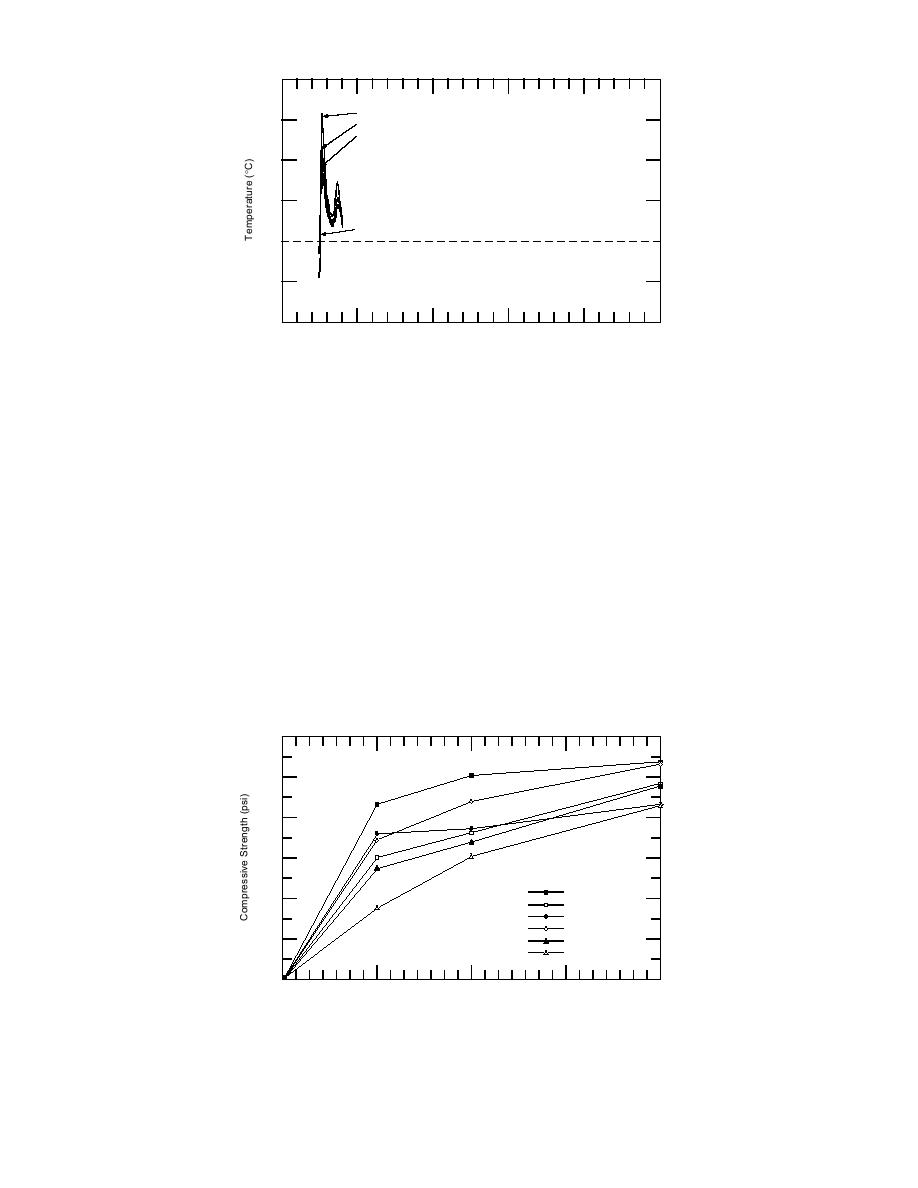
20
1.27 cm Below Top Surface
15
2.54 cm Above Slab Bottom
1.9 cm Below Slab
10
5
Middle of Slab
0
5
10
0
5
10
15
20
25
Days
Figure 8. Concrete temperatures for the slab containing admixture DP.
stored unprotected next to the slabs. Air-void
control concrete cured under the heated condi-
tion. The mixture proportions are given in Table
parameters were not determined.
17, placement time of the concrete in Table 18, and
the properties of fresh concrete in Table 19.
Strength development
Concrete cylinders were cast during construc-
Cost comparison between
tion. For the heated control slab, the cylinders
were stored for curing on the ground near the
conventional and antifreeze concrete
slab and on an overhead shelf. For the admixtured
As previously mentioned, a heated shelter was
used for the control concrete. This provided an
concrete slabs, the cylinders were stored for cur-
opportunity to compare costs between normal
ing partially embedded in cold gravel at the edge
winter concreting to those using antifreeze ad-
of the concrete slabs. Also, a second set of cylin-
mixtures. Based on these field tests, it is apparent
ders for each admixtured concrete was stored on
that the main difference between normal concrete
an overhead shelf in the heated enclosure. The
and antifreeze concrete is the heat, shelter, and
cylinders were 7.5 cm in diameter by 15 cm in
labor needed to protect normal concrete compared
length. Figure 9 shows their compressive strengths
to the chemicals needed to protect antifreeze con-
at various ages. The strengths of the concrete cyl-
crete. The cost to erect, heat, and dismantle the
inders containing the admixtures, stored heated
temporary shelter at Soo was estimated to be
and unheated, exceeded the strength of 28-day
6000
5000
4000
3000
Control
Control (est)
2000
(est)r o Site
Conttroll Site
Con
ConttrolCeiling
Conrol Ceiling
PS Site
PS Site
1000
DP Site
DP Site
Conttrol+5C
Conrol +5 C
0
28
21
0
7
14
Concrete Age (days)
Figure 9. Compressive strength of cylinders (some cured in the heated
shelter and some next to open slabs).
17



 Previous Page
Previous Page
